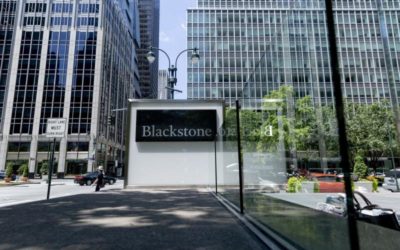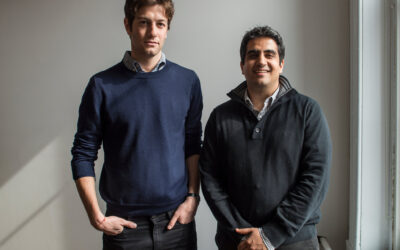Recently Cebile Capital released its 2020 Year-End Secondaries Market Update, which summarises key trends witnessed in 2020 and outlook for 2021 from secondaries investors. Cebile surveyed over 95% of the active secondaries investors globally to gain insight into their investing activity in 2020 and outlook for 2021.
The survey found that a significant amount of dry powder earmarked for deployment in 2020 remains unallocated. Following a slowdown in investing activity in H1 2020, secondarybuyers previously expected to double-down on their deployment to meet their full yearallocation goals. However, as the year draws to a close, it seems unlikely that all buyers willmeet their 2020 deployment goals, with $18 billion of 2020 earmarked capital stilloutstanding as of November 2020. Nearly half of investors do not expect to meet their 2020targets and deal volume is expected to be $39 billion for the year, roughly half thetransaction volume which occurred in 2019.
Most of the remaining 2020 dry powder is concentrated amongst the largest players. While investors with $1 billion or more of available capital represent just 11% of buyers by total number of investors, they account for 61% of the capital pool. Over a third of outstanding 2020 capital is held by investors with less than $1 billion of available capital. Sufficienttransaction supply – and in particular, a supply of large deals – before year- end is unlikely to occur to allow investors to meet their deployment targets.
As a result, the outlook for demand in the secondaries market throughout 2021 – and inparticular, H1 2021 – is very strong, with buyers looking to deploy $61 billion in 2021. Investors with $1 billion or more of capital earmarked for investment in 2021 represent 32% of buyers, accounting for 83% of available capital.
Deal volume dipped in 2020; but is expected to rebound sharply in H1 2021
Deal volume in 2020 is set to be 50-55% lower than it was in 2019; and the total completeddeal volume this year is expected to stand at $39 billion. However, nearly two thirds ofrespondents expect either a slight or significant increase in deal supply during H1 2021.
Large, but not mega-sized, investors expect to be the key beneficiaries of the type of 2021 deal supply that is anticipated to come to market.With regards to valuation, pricing and performance figures, most buyers expect Q3 NAVs will be written up by as much as 10%, and 62% of buyers expect pricing to be lower thancomparable pricing pre-COVID. Furthermore, the impact of COVID on pricing and returns inthe secondaries market is expected to continue to persist for some time – one third of investors feel the market’s return to normal is still 3-6 months away, while over half believea return to normalcy is at least nine months or more away. Nonetheless, approximately 81% of buyers expect COVID’s impact will result in returns that are at or above their targeted underwriting.
Surge in demand for GP-leds, with continuation vehicles most favoured Cebile Capital has found that GP-led transactions were an increasingly important portfolio management tool in 2020, as they enabled buyers to perform in depth analysis of theunderlying assets and provided managers with additional time to maximize value. Nearly 60% of investors reported that GP-led deals represented 40% or more of the transactionsthey completed in 2020 and over half said GP-led deals were 40% or more of their
completed deal volume in Q3. Investors have found these solutions to be attractive, as GP-led deals in 2020 are already expected to outperform their LP-led counterparts completed this year.
Buyers’ target returns for GP-leds will remain consistent in 2021, as 65% ofinvestors expect they will be able to underwrite such deals to MOICs of 1.8x or higher.Demand for GP-leds is expected to continue into 2021, with $25 billion of dry powderdesignated for deployment in 2021 for deals of this type. Nearly 60% of investors expectGP-led transactions will continue to represent 40% or more of completed deal volume overthe next six months.Most GP-led deals brought to market in Q3 were multi-asset ones.
Over three-quarters of buyers reported that 40% or more of GP-led deals they assessed in Q3 were for multi-assetportfolios. In H1 2021, the proportion of multi-asset GP-led deals is expected to increase, asfive in six buyers expect that multi-asset portfolios will represent the 40% or more of GP-leddeal flow that comes to market over the next six months. Still, demand for single-assetand/or concentrated deals remains strong, as two-thirds of all buyers will maintain theirappetite for concentrated GP-led opportunities in 2021.
Source: Press Release
Can’t stop reading? Read more
US Pipeline Operator ONEOK Inks Two Deals for $5.9 Billion
US pipeline operator ONEOK Inc. agreed to buy a Permian Basin rival and a controlling stake in...
Blackstone Is Said to Seek A$5.5 Billion Loan for AirTrunk Bid
Private equity firm Blackstone Inc. is in discussions with banks for a five-year loan of about...
Thrive Capital to lead multi-billion dollar OpenAI investment round at $100bn valuation
OpenAI, the company behind the popular AI tool ChatGPT, is in advanced talks to secure several...




